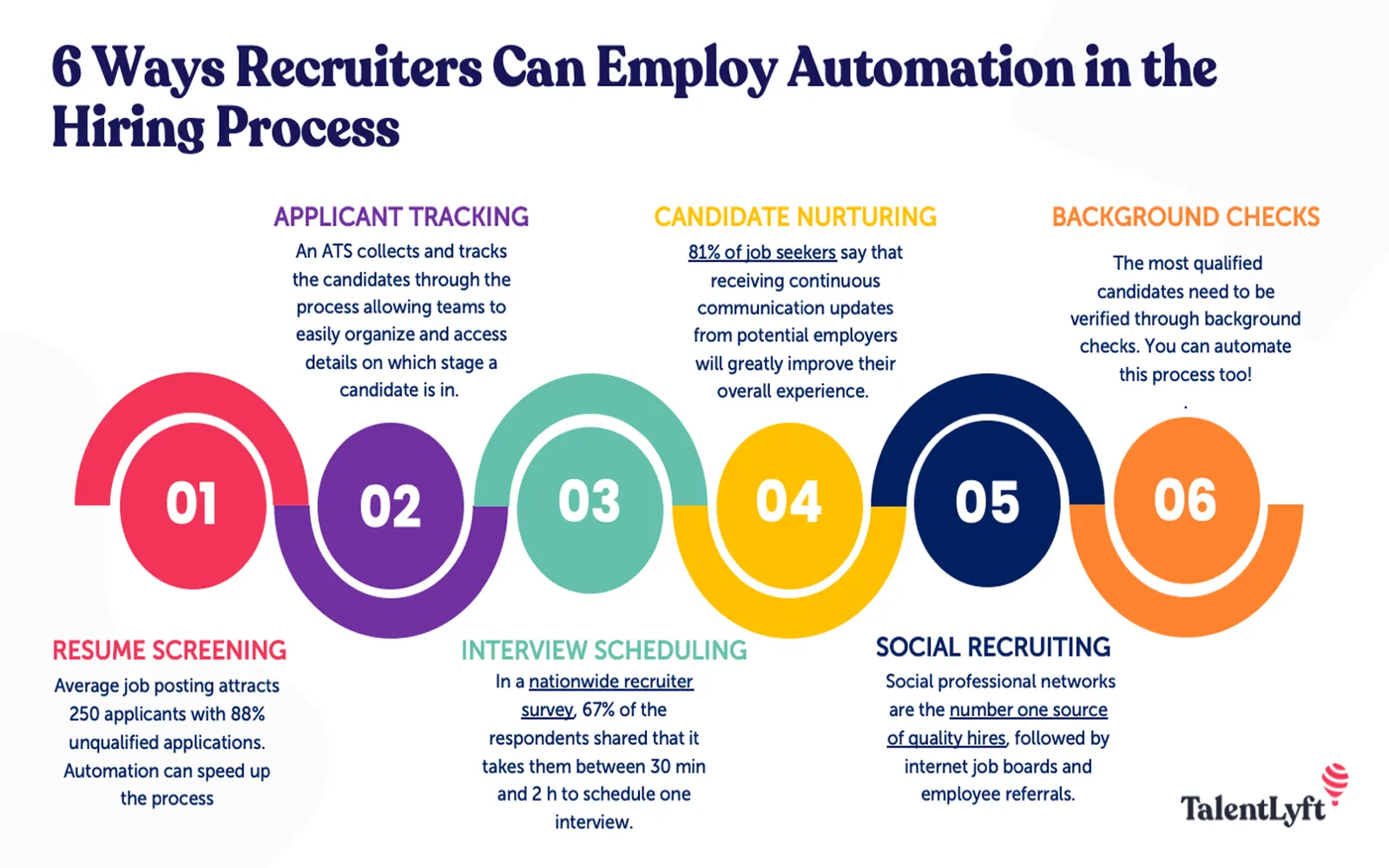1. Implement Applicant Tracking Systems (ATS)
One of the most effective ways to automate recruiting processes is by implementing an Applicant Tracking System (ATS). ATS software streamlines the hiring process by allowing recruiters to manage job postings, applications, and candidate communications all in one place. Recruiters can easily filter resumes based on keywords, skills, and experience, making it faster to identify the best candidates. With an ATS, recruiters can also automate follow-up emails and scheduling interviews, saving valuable time.
2. Utilize AI-Powered Chatbots
Integrating AI-powered chatbots into the recruitment process can significantly enhance candidate engagement and streamline communication. Chatbots can handle initial inquiries from candidates, provide information about job openings, and even conduct preliminary screening interviews. This not only reduces the workload on recruiters but also ensures a faster response time for candidates, improving their overall experience. By automating these interactions, recruiters can focus on more strategic tasks such as building relationships with top talent.
3. Automate Social Media Recruitment
Social media platforms are invaluable for sourcing candidates. Automating social media recruitment can help recruiters reach a larger audience without the manual effort of posting job openings across multiple channels. Tools like Hootsuite or Buffer allow recruiters to schedule posts in advance, ensuring consistent engagement. Additionally, automation can help in tracking the performance of these posts, enabling recruiters to analyze which platforms yield the best candidates and adjust their strategies accordingly.
4. Leverage Recruitment Marketing Automation Tools
Recruitment marketing automation tools can help recruiters promote their employer brand and engage potential candidates effectively. These tools facilitate the creation and distribution of targeted content, such as blog posts, emails, and social media updates, to attract talent. By automating these marketing efforts, recruiters can maintain a steady flow of candidates while also building a strong employer presence in the market. This not only aids in filling current vacancies but also builds a pipeline for future hiring needs.
5. Use Data Analytics for Decision Making
Data-driven decision-making is crucial in modern recruitment. Automating data collection and analysis through recruitment analytics tools can provide valuable insights into candidate sourcing, hiring trends, and overall recruitment effectiveness. By utilizing these tools, recruiters can identify which channels are most productive, understand the attributes of successful hires, and refine their strategies for future recruiting. This not only improves efficiency but also enhances the quality of hires.
Summary of Automation Benefits
| Automation Tool | Key Benefits |
|---|---|
| Applicant Tracking System (ATS) | Streamlines application management, filters resumes based on criteria, automates scheduling. |
| AI-Powered Chatbots | Engages candidates, answers inquiries, conducts preliminary screenings. |
| Social Media Recruitment | Automates job postings, tracks performance across platforms. |
| Recruitment Marketing Automation | Promotes employer brand, engages prospects, builds talent pipelines. |
| Recruitment Analytics Tools | Provides insights into hiring trends, improves sourcing strategies. |
In conclusion, automating recruitment processes can significantly enhance efficiency, candidate engagement, and overall hiring outcomes. By leveraging tools such as ATS, AI chatbots, social media automation, recruitment marketing automation, and data analytics, recruiters can free up valuable time to focus on strategic initiatives. Embracing these technologies not only supports the current recruitment landscape but also prepares organizations for future hiring challenges.





